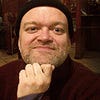
NB-IoT is due to be an important part of the 3GPP Release-17 massive Machine Type Communications (mMTC) specification -- with details of the latest 5G spec to be frozen around June 2021 -- but expect deployments of the IoT technology to continue to grow on 4G in the meantime.
"It was always scheduled to be part of Release-17," comments Heavy Reading Senior Analyst Steve Bell on NB-IoT.
This means that devices using the latest 5G spec will start to arrive on the market around June 2022. "It usually takes about 12 months," Bell tells us. This is typically dependent on how quickly silicon manufacturers -- Qualcomm, MediaTek and others -- can bring the spec to the commercial market.
Of course, NB-IoT was already part of the 4G spec.
NB-IoT was initially frozen in the 3PP LTE-Advanced Release-13 specification in June 2016. It started to come online commercially around summer 2017. It is now due to be incorporated as part of the 5G mMTC spec, with millions of IoT devices starting to come online with the uptake in smart cities, among other projects.
Ovum reports that Chinese operators -- China Mobile, China Unicom, and China Telecom -- accounted for almost 1 billion IoT connections, equal to 78% of the total market, in the first half of 2019. China Mobile remains the global IoT connectivity leader, accounting for 58% of IoT connections globally.
These Ovum figures incorporate 2G and 3G connections, as well as 4G NB-IoT connections, but now operators are moving away from the predominantly 2G cellular solutions toward the new NB-IoT technology. Notably, in March 2018, the Chinese State Grid partnered with China Mobile to test and deploy NB-IoT meters, as part of its major automated meter reading (AMR) service for electric utilities project, which is part of one of the largest IoT projects in the world currently.
With the latest moves in 5G, IoT projects could potentially become even larger, as NB-IoT is expected to deliver on the ITU's IMT-2020 "massive IoT," requirement, which allows for the coverage of a million devices per square kilometer (0.38 square miles). This is compared to the 60,680 devices that NB-IoT can currently support on a 4G network.
Hence IoT device deployments could grow by billions of units. IHS Markit is predicting that 5G IoT deployments could balloon to around 140 billion devices by 2030, as opposed to the 1.2 billion IoT devices worldwide that Ovum found in 2019.
Related posts:
— Dan Jones, Mobile Editor, Light Reading
About the Author(s)
You May Also Like




_International_Software_Products.jpeg?width=300&auto=webp&quality=80&disable=upscale)







